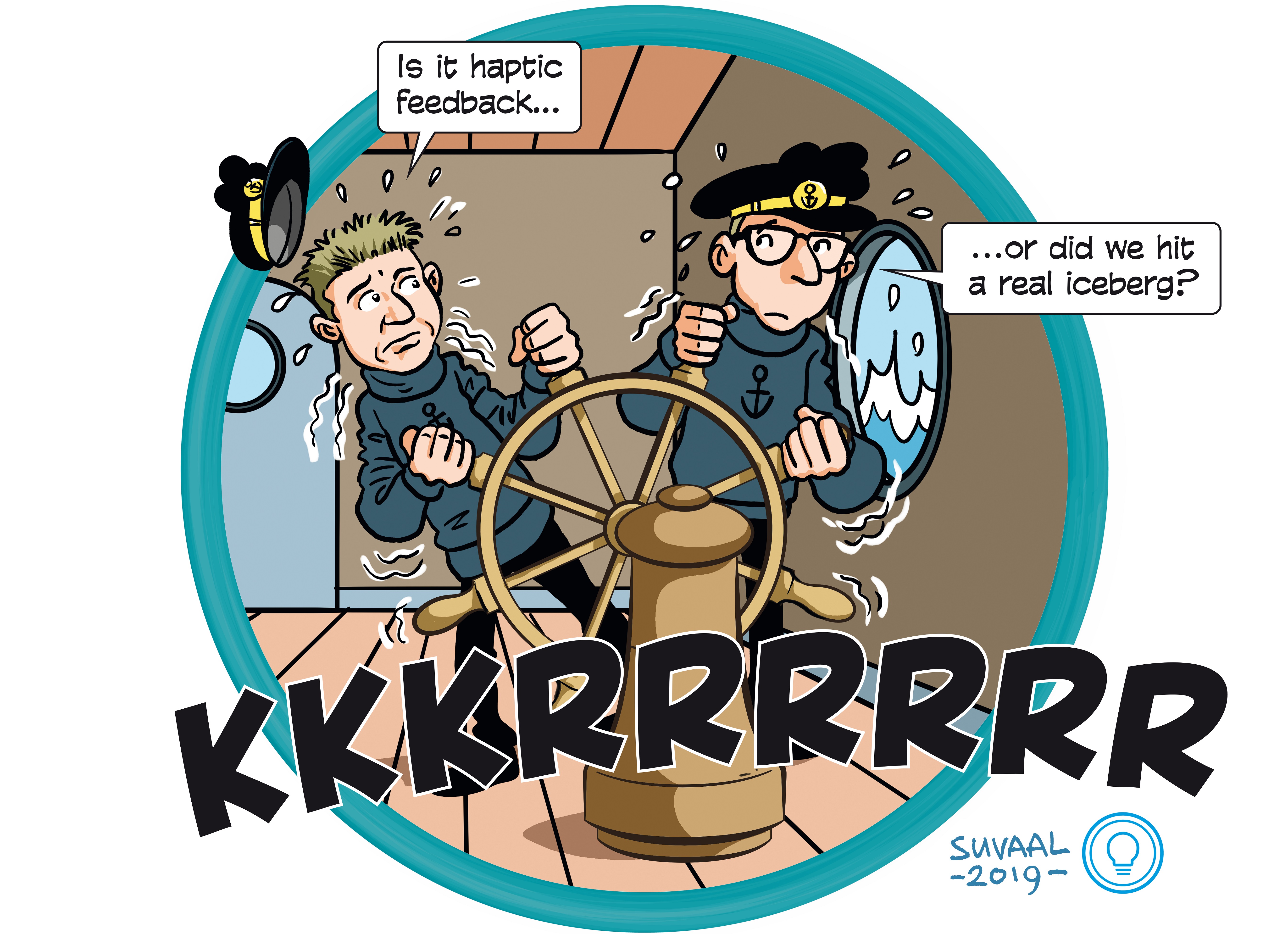Haptics at sea
Themes: Robotics, Water & Maritime


A TRL is a measure to indicate the matureness of a developing technology. When an innovative idea is discovered it is often not directly suitable for application. Usually such novel idea is subjected to further experimentation, testing and prototyping before it can be implemented. The image below shows how to read TRL’s to categorise the innovative ideas.
Summary of the project
This project is unique because it is a cooperation between two departments within the faculty of ME, bringing together the research fields of marine engineering, ship hydromechanics and haptic feedback.
Nowadays, haptic feedback can be found in many different settings, ranging from cars to robot arms. However, so far haptic feedback has not been applied to assist control of ships. Within this project the researchers have built world’s first haptic ship simulator, by connecting a ship’s bridge simulator software package with haptic control levers, such that haptic algorithms can be developed, implemented and tested by performing human-in-the-loop experiments. Through the feedback it is for instance possible to get a feeling for the distance between the ship and the jetty. Or when you are on a small fast ship which is bouncing over the water – like marines who are on a mission do- , the haptic feedback can be used to intuitively advise the operator to lower the ship speed, when possible, to prevent serious injuries from occurring.
Based on the experience so far, haptic technology has the potential to assist in making specific types of ships and their operations more safe and efficient.
What's next?
The next step for this project is to demonstrate the potential of haptic feedback in a more realistic simulation environment, such as for instance a full mission bridge simulator as is available at various research institutes and nautical colleges. Ultimately the researchers want to introduce and apply the haptic feedback system onboard real ships.
Dr. Arthur Vrijdag
dr. David Abbink
Additional information
- Een schip besturen op gevoel, Link Magazine (Nov. 2017), p. 45
- Marine haptic feedback, The Marine Professional (Feb. 2018), p. 12-13
- TU Delft ontwikkeld op afstand bestuurde olietankers. NU.nl video-item
- Haptic feedback for maritime operations by Arthur Vrijdag (MTT) and David Abbink (CoR)
- Haptics for the maritime environment
